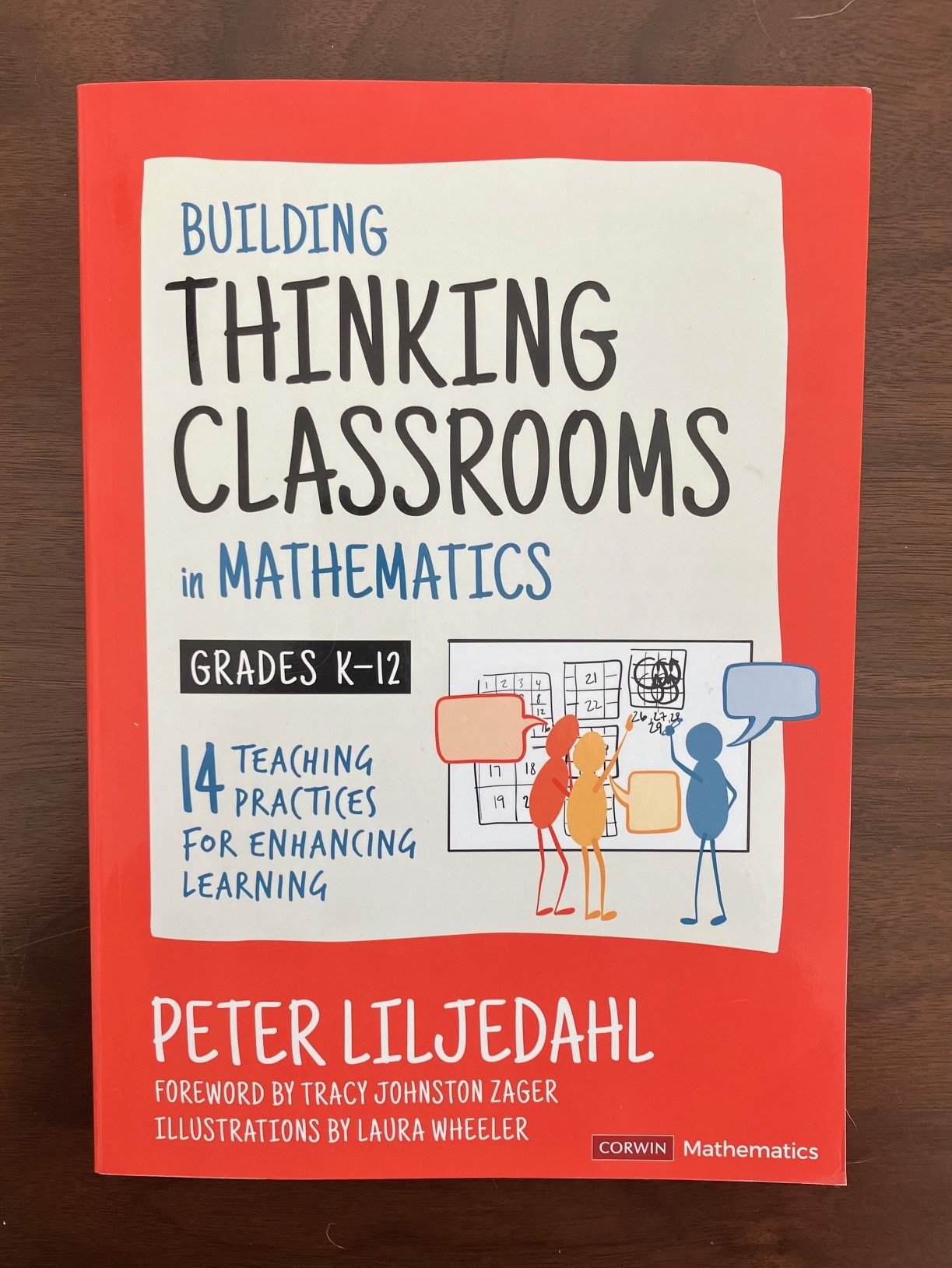Learning Why to Disrupt Teaching Norms
Last week I introduced the idea of using a puzzle, activity, or starter, at the beginning of instruction to help students transition into the classroom or transition between instruction. I discussed how starters at the beginning of instruction can be an opportunity to practice or review a key skill and that it also primes students for thinking and learning.
This week, I am going to start a book study or book review of Building Thinking Classrooms in Mathematics by Peter Liljedahl.
In this book, the author shares his research and discusses how using optimal practices for thinking positively impacts students’ thinking, engagement, and learning.
Liljedahl’s research focuses mainly on math instruction, which will be the focus of my blog entries. However, I will look for ways to apply his research towards language arts, science, social studies and history. Please remember that as I describe Liljedahl’s research, it is about instruction in a math classroom.
Brief Summary of the Research
Liljedahl observed 40 different classrooms in various educational settings, including different socio-economic status, private schools and public schools. He consistently observed the same behaviors in students during what he calls a “now-you-try-one task.” When he quantified his observations, he determined that 20% of the students were thinking and attempting the assignment. The remaining students were either slacking, stalling, faking or mimicking, and half of the students observed were mimicking. That is, they were using their notes to solve math problems using the exact steps in their notes, and when they encountered a problem that they could not solve with their notes, they were stuck (pps 8-10).
Disrupting Norms to Optimize Thinking
Liljedahl states that the institutional norms that guide teaching have not changed. The teacher leads the class from the front of the classroom. Students sit at their desk and either take notes or watch and practice along with the teacher before trying problems on their own. Students’ expectation of how they are going to learn remains the same and is habituated, so students bring their existing learning habits and expectations with them into the classroom. This includes the behaviors of mimicking, stalling, faking, and slacking. When the institutional norm of a traditional classroom was removed, students’ habituated habits and expectations were interrupted, and they began to use new, thinking behaviors.
For example, Liljedahl worked with eight teachers over two weeks. In each classroom all of the furniture was removed. That change to the physical structure of the classroom not only lead to an increase in students’ thinking, but Liljedahl also found that students built endurance and were thinking for longer periods of time. Liljedahl clarifies that the removal of furniture didn’t create the increased thinking of students, rather it disrupted the norms, habits, and expectations, which made room for thinking behaviors (pps 12-13).
Removing all of the furniture from a classroom is not ideal. It’s difficult for the teacher and for the students, especially if students need accommodations for mobility issues. To expand on his research, Liljedahl worked with teachers on specific changes to classroom structure. This includes furniture layout, where students work, who students work with, classroom procedures, lesson structure, and type of student work for example. His goal was to look for the structures that created optimal practices for thinking.
What’s Next?
As a tutor and educator, I reflect on my practices and whether or not they disrupt students’ habits to avoid or mimic thinking. Many of the activities and puzzles I have suggested are good for review and practice. Students should already be familiar with the content and be able to use their knowledge to solve math problems, answer questions about the text, create original sentences with vocabulary or decode a word to read it. These activities reinforce thinking skills as they reinforce previously learned content. It has a place in the educational process, but there is room to create resilience when faced with new problems. That is where this book study will take us.
Liljedahl describes his research on disrupting institutional norms around teaching by using optimal practices for thinking.
If you have questions or thoughts, you can contact me for more information through email, a phone call, or using the contact button below.
